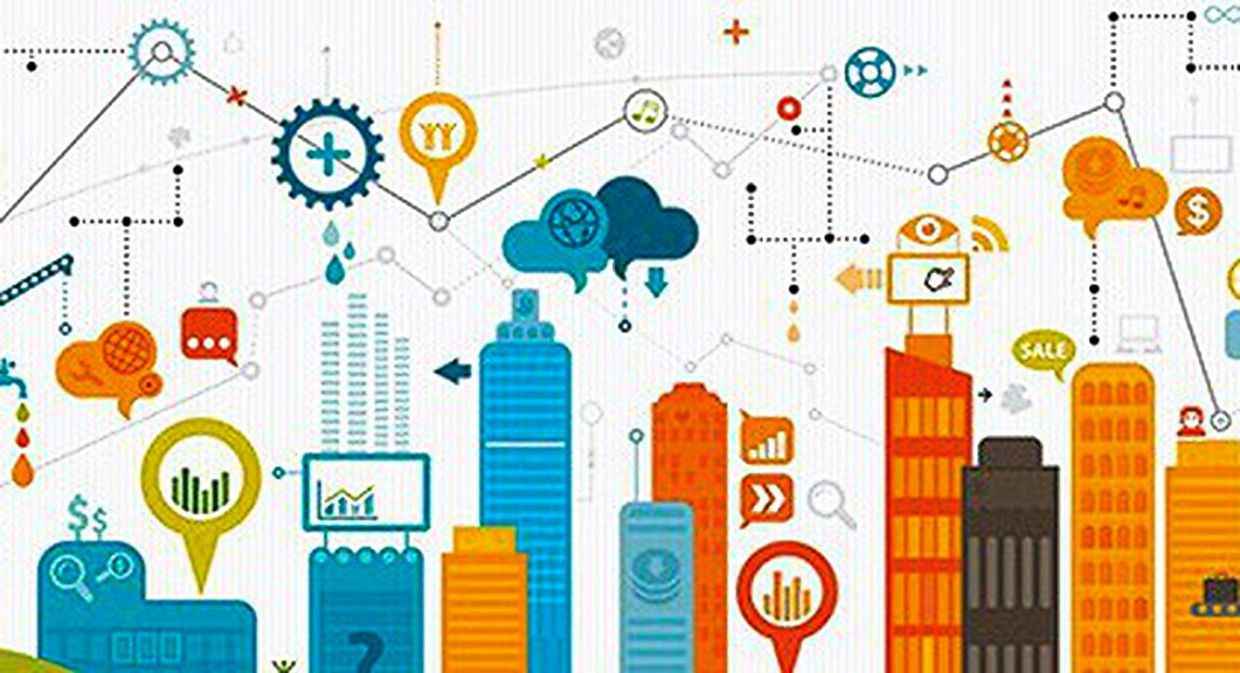The Future of Social Interaction: Thriving in a Digital Economy
The way we talk, meet, and connect has turned upside down. Gone are the days when a chat meant sharing a laugh over coffee. Today, screens and usernames forge our bonds. As we glide into the future of social interaction in a digital economy, it’s clear our patterns of making friends, building trust, and growing networks must adapt. But you don’t need to stumble through this new digital landscape alone. Get ready to navigate this shift and not just survive, but thrive in the wild web of virtual communication and networking. With my guide, you’ll master digital handshakes and craft relationships as robust as those begun with a firm, real-life grip. Let’s dive in!
Navigating the Shift to Virtual Communication and Networking
Adapting to Virtual Communication Trends
We all talk to each other using tech more now. Think about how often we text, share photos, or video chat. We need to keep up with how fast these virtual communication trends change. Knowing the latest ways to talk online helps us stay close, even when we’re far apart. It’s like how we learned to ride bikes, but now with keyboards and screens.
For example, how we show feelings with emojis in texts is a big trend. They make our words colorful and fun. We must learn what works best in emails, chats, and video calls. This way, we get our points across without being there in person.
Building Relationships in Digital Economy Networking
Meeting new folks for work or fun happens a lot online now. It’s like building a bridge from your couch to anywhere in the world. A good chat can lead to a friend or a new job. The key is to make real connections, even though we’re not face-to-face.
By using digital economy networking well, we make bonds that last. We use social media, emails, and apps to share ideas and get to know each other. It’s like having a digital handshake – you want it to be just right.
For this, being nice and clear in our talks online is a must. People remember those who make them feel good, even in a quick message. This way, we create a space that’s about more than just work or likes. We make a web where we help each other grow.
With these tools, we talk with people from all over. Our words can travel across the globe fast. It’s magic how we can have a morning coffee in New York and work with someone having dinner in Tokyo.
We’re also getting ready for new things like AI in chats. This can help us talk and connect even better. Soon, we might chat with a bot that feels just like a pal. Imagine getting tips or help from a friendly bot that always listens.
Keeping up with these shifts in how we meet and talk is not just smart, it’s fun. It opens doors to new friends and chances we didn’t have before. By jumping into this digital stream, we learn and share in ways that were just a dream not long ago.
It’s a wild ride, this push to virtual and online places. But by staying sharp and open, we can get through it hand-in-hand, even when those hands are typing on keyboards miles apart.
The Growth and Evolution of Online Social Platforms
Tracking the Social Media Evolution
Think of how we used to talk. We would meet face to face. Now, we click to chat. We’ve seen a leap in online social networks. Their growth is something to watch. Each year, these networks change. They find new ways to keep our eyes on screens longer.
We once shared text posts and photos. Compare that to now, where videos and live streams rule. Social media evolution affects us all. It shapes how we talk, share, and think. Are those cat videos worth your time? Maybe. But social media keeps us hooked.
Global connectivity impact is huge. It’s like a spider’s web. It stretches across the world. Folks find pals in different time zones. They chat day and night. Internet-based relationships bloom. They are real friendships, just without handshakes.
Online interaction patterns shift with the times. They adapt to our needs and tech. With every update, we find new ways to bond. Social platforms growth doesn’t just mean more users. It means we find clever ways to connect. This keeps us coming back for more.
Engaging with Emerging AI-Driven Social Interaction Tools
Enter AI, stage right. It’s the new player in our digital drama. AI in social interaction can wow us. It can find what we like before we click ‘like’. It can chat with us when friends are away. Isn’t that neat?
Digital conversational agents are here. They’re smart bots that can talk like us. Sometimes, you can’t tell they’re not human. They can help plan events, remind you of birthdays, and even tell jokes. They’re like pocket pals.
Now, let’s chat about virtual event networking. It’s like a party. But no need for shoes. You log in and mingle. You meet folks who like the same things. It’s networking, minus the travel. And AI helps here too. It can pair you with people you should meet. Like a friend matchmaker.
Virtual reality friendships are next level. Put on a headset, and you’re with pals in a digital world. Augmented reality social skills let us practice being chatty. It’s safe to trip over your words. You get better without real-world blushes.
So, the digital economy networking is not tomorrow’s tale. It’s happening now. And it’s not slowing down. We have to keep up. After all, this is how we make friends and do business today.
Remember, all this tech is super fun. But real chats matter too. Balancing screen time and face-to-face time is key. Tap, swipe, click—make friends and network. But sometimes, just talk. It’s all about making this digital world feel warm, one click at a time.
Reinventing Socialization Through Technology
Exploring Virtual Reality Friendships and Augmented Reality Social Skills
Making friends in virtual worlds is now a thing. It’s not just for gamers anymore. People meet and bond within virtual reality (VR) spaces, share experiences, and create memories without meeting in person. It starts with a hello in a VR game or a shared laugh during a virtual concert. Soon, VR friendships become part of our social circles.
Augmented reality (AR) is changing how we learn to interact too. AR apps on phones can teach us new languages by making words pop up in our real-world view. They help us practice social cues and even make public speaking feel less scary by simulating an audience in our living room.
The Role of Immersive Technologies in Shaping Digital Behavior
Immersive tech like VR and AR is creating new ways for us to behave and connect. With VR, you can paint in a 3D space or tour museums with friends from across the globe. AR brings digital elements into our world, turning the environment around us into part of the game. These tech tools are not just fun; they are changing how we make and keep friends.
Kids now grow up learning from screens and gadgets, and it’s not all bad. They use tech to play and learn with others, preparing them for a digital economy. Look at online community engagement. By using digital tools, people come together to support causes, start movements, and feel close even when they are far apart.
Strong internet relationships happen more and more. We meet others online who have the same interests, and these connections can be deep and real. Some worry that screen time hurts sociability, but it can also offer ways to communicate we never had before.
Digital collaboration tools like video chats and online project spaces let people work together without being in the same room. This kind of remote socializing practices makes it possible for teams around the world to create amazing things.
The growth of social platforms has shown that we love to connect and share, and our tools for this are getting better all the time. Even AI is joining in. Digital conversational agents, like chatbots, can now offer company or help us practice conversations. They are part of the cyber social ecosystems that put people in touch with each other—and with helpful tech.
Smartphones have made social dynamics super portable. We can chat, share, and play with friends while on the bus or waiting in line. New tech like 5G will only make these connections faster and smoother.
Privacy in digital socializing remains crucial. That’s why things like blockchain can be important. It can help keep our chats and shared moments safe from prying eyes.
As we move forward, we must keep learning and adapting. The digital economy is here, and with it comes new ways to make friends, learn, and work together. We can’t stand still; we need to keep up with these changes to thrive. Technology-mediated communication is only growing, and if we use it right, it promises to enrich our lives in ways we are just starting to explore.
Ethical and Practical Considerations in the Digital Age
Upholding Digital Etiquette and Privacy in Virtual Spaces
In the digital world, the way we talk and mix with friends gets trickier. We should think about how to treat each other well. We must not forget that behind each profile or avatar, there’s a real person with real feelings. It’s like being in a large room where we can’t see everyone’s face. Yet we still have to be nice and fair to everyone around us.
The hard part is knowing who can see what we share. That’s where privacy comes in. Just as we lock our doors at home, we must lock away our digital info too. Safety is key when we spend loads of time online. It’s easy to let slip something personal. That can lead to big mess-ups if it falls into the wrong hands.
Remember, good manners on the net help us all. They make virtual spaces safe and fun for folks to meet and chat. This means not spreading mean words and keeping secrets safe. It doesn’t matter if it’s a text, a game, or a cool VR world. The rules of being kind still apply.
Navigating the New Norms of Screen Time and Sociability
Now, most of us hang out on screens more than anything else. This changes how we make pals and keep them too. We’re all learning to share laughs and high-fives without being side by side. To make real bonds, we’ve got to listen and show we care, even if it’s just through a video call or a message.
Screen time shapes our days — from school to play. We get to learn and play in ways that never could before. But too much time glued to screens isn’t top-notch for us. Finding a balance is like getting the right mix of foods on your plate. You wouldn’t eat only candy, right? The same goes for screen time. Mixing it up keeps us happier.
To stay on track, set times to step away from gadgets. Dive into a book, run in the park, or just daydream a bit. When we mix all this into our day, we get the best of both digital and real worlds.
Even as tech gets smarter and faster with things like 5G, we should keep these tips in mind. They will help us talk better, stay safe, and make ace friends in the vast web of the digital economy. Just like in the real world, a smile, or a thumbs up, can go a long way — even if it’s sent with a tap or a click. With every message we send, we’re building a safer e-society. How cool is that?
We’ve journeyed through the virtual shift, embracing new ways to talk and network. From adapting trends in virtual chats to building ties in our digital world, it’s clear: we’re evolving. Social media’s growth has changed the game, with AI tools shaping how we connect.
Virtual and augmented reality bring fresh ways to meet and grow our social skills. These immersive techs are carving out new habits in our digital lives. But with great tech comes big responsibility. We must mind our manners online and balance our screen time.
To wrap up, these changes aren’t just trends. They’re reshaping our lives and how we interact each day. Let’s keep learning and growing in this bold new world. Together, we can make tech work for us, in smarter, kinder ways.
Q&A :
How is the digital economy changing social interaction?
With the advent of the digital economy, social interaction has been transformed through the proliferation of online communities, real-time communication platforms, and social media networks. These virtual spaces allow people to connect, work, and share experiences regardless of physical location, leading to more diverse social networks and new forms of community engagement.
What impacts will the digital economy have on future social relationships?
The digital economy is likely to further influence social relationships by enabling greater connectivity and introducing innovative communication tools. The rise in remote work, digital nomadism, and online collaboration could strengthen global relationships while potentially weakening local social ties. Additionally, augmented and virtual reality technologies could create immersive social experiences that redefine the concept of presence and companionship.
Can technology in a digital economy enhance human-to-human connection?
While technology has historically been seen as a barrier to genuine human connection, the digital economy offers tools that can enhance human-to-human interactions. Video conferencing, instant messaging, and social networking services can foster relationships by providing convenient, accessible, and diverse ways to communicate and express empathy across distances.
What are the challenges of social interaction in a digital economy?
One of the primary challenges of social interaction in a digital economy is maintaining privacy and security in online spaces. Additionally, the digital divide—differences in access to digital technologies—can exacerbate social inequality. There is also the issue of digital etiquette and the increased potential for misunderstandings without the nuances of face-to-face interaction.
How will emerging technologies like AI and VR affect social interaction in the digital economy?
Emerging technologies such as Artificial Intelligence (AI) and Virtual Reality (VR) have the potential to dramatically shape social interaction in the digital economy. AI could personalize online interactions and predict individual preferences, while VR might create lifelike virtual environments for more immersive social experiences. However, these technologies also raise concerns about the authenticity of interactions and the potential for reduced physical social activities.






